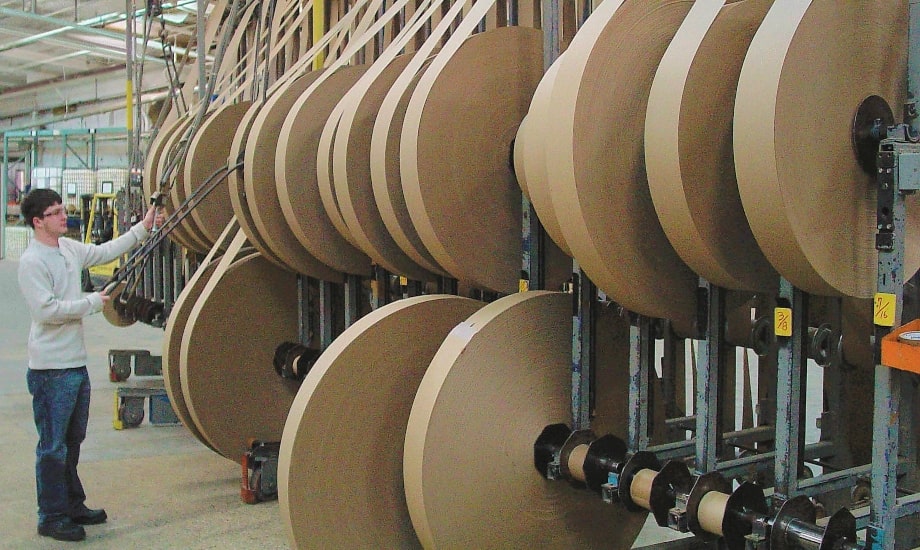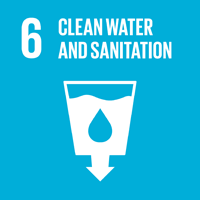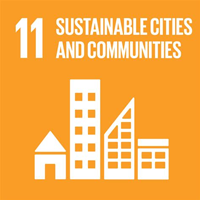亮点
- Greif’s approach to water management stems from our responsibility to protect key resources for future generations. A critical piece of this approach is maintaining compliance with local and global water regulations that apply to our operations across the world.
- Our water management priorities focus on efficient and responsible water use in our mills and in water-scarce regions throughout our operations. We leverage standardized environmental data dashboards across our mills enabling us to effectively manage water use in our paper production processes.
- In 2024, we furthered our progress in water conservation initiatives. We eliminated direct discharges into local waterbodies from our Baltimore mill. In the future we continue to aim to reduce direct discharges at other facilities, with plans to phase out discharges at the Taylors mill by 2026.
- Our water conservation efforts contributed to a 10 percent decline in water withdrawal and a 2 percent decline in water discharges since 2019.
水为何如此重要
Greif prioritizes responsible management of our water resources, aiming to mitigate negative impacts associated with water withdrawals, discharges, and stormwater runoff. We recognize that water is a vital resource, and we strive to safeguard it for the benefit of future generations. Following The Greif Way, we seek opportunities to contribute to positive outcomes for the environment and for communities with whom we share a water source. To that end, we pursue opportunities to improve water efficiency and elevate water quality across our organization with a focus on water-intensive operations at our mills. In efforts to comply with water quality requirements, water discharged from our facilities undergoes thorough treatment, whether on site or by a trusted third party. All treatment measures strictly adhere to relevant regulations so that the discharged water meets high standards of health and safety for wildlife and the local communities.
Our Approach
我们对全球水资源保护和效率的承诺概述在我们的 环境、健康与安全 (EHS) 政策. We enlist our EHS team to monitor regulatory compliance and implement optimal practices in water treatment and recycling across all facilities. The EHS team also proactively oversees water usage in critical facilities, including those in water-stressed areas to help optimize our water footprint. Within our environmental structure, we maintain a robust compliance management system with dedicated support. Greif champions and empowers local management teams to improve water efficiency, enhance water quality, minimize impact on local water sources, and reduce associated costs. Our approach extends to managing water discharge in strict compliance with individually allocated water permits.
We recognize water is a critical element of the manufacturing processes at our mills and understand the impacts irresponsible water consumption can have on local communities and ecosystems. To support sustainable water usage at Greif, we have worked diligently to deploy advanced water management practices at paperboard mills within our Sustainable Fiber Solutions business, which accounts for approximately 90 percent of our total water usage. At these sites, we have implemented reduction and recycling processes including collecting HVAC cooling water and compressor cooling water for reuse at our Riverville mill, installing ultra-low water consumption mechanical seals on process pumps at our Massillon mill, and installing effluent treatment plants at multiple mills that not only reduce biochemical oxygen demand but also reduce water consumption overall. We plan to evaluate sustainable water management practices moving forward with ambitions to reduce non-contact cooling water discharges at our paper mills.
Mill Water Efficiency Data (compared to 2019 baseline)
- 2024 Mills Production Decrease: 18 percent
- 2024 Total Water Withdrawal Decrease: 10 percent
- 2024 Total Water Discharge Decrease: 2 percent
- 2024 Total Water Consumption Decrease: 65 percent
- 2024 Water Consumption Rate (Water Consumption per MT of Production) Decrease: 46 percent
Effective management of untreated stormwater is central to Greif’s water strategy, upholding our ambitions to protect local water resources. To carry out this approach, we place a strong emphasis on effective stormwater management practices across our plastic and steel facilities. Regular and thorough stormwater sampling and testing are essential parts of our operations, maintaining strict adherence to safety standards and regulations while identifying continuous improvement opportunities. We provide comprehensive annual training to all relevant colleagues to help build a culture of responsible water management throughout our organization.
Preventing and responding to unforeseen water events like spills are crucial aspects of our approach to water management. In addition to site-specific stormwater pollution prevention plans and robust spill prevention controls at our key facilities, we have comprehensive global contingency plans and emergency procedures designed to address and mitigate any potential or actual spills. Our operations emphasize compliance, utilizing our Environmental Management System (EMS) to track spills or releases that may impact groundwater and soil and identify corrective actions to remediate such events. We are currently evaluating potential improvements to the EMS to capture additional quantitative data to track trends over time and improve our incident response efforts.
An essential aspect of our approach to water management is compliance with emerging water-related regulations. By adopting sustainable water practices, we can minimize potential sources of noncompliance related to water management while simultaneously improving operational efficiency. Responsible water management also drives the mitigation of risks that pose a threat to Greif’s daily operations and long-term business success, specifically in water-stressed regions where we operate. Annually, we use the World Resources Institute’s Aqueduct Water Risk Atlas tool to consider which of our facilities operate in areas of water stress. To mitigate negative impacts in these regions, we have adopted policies and practices designed to reduce excess water consumption such as replacing faulty valves, promoting water recycling, installing touchless faucets and harvesting rainwater. Greif recognizes that operating responsibly within water permit requirements at every facility is critical to accomplishing our mission of securing water sources for future generations.
Goals, Progress, & Performance
2025年目标:
- 以 2014 年为基准,到 2025 财年末,将 Riverville 和 Massillon 工厂每生产一公吨产品所排放的生化需氧量 (BOD) 减少 10%。
As of the end of 2024, we have reduced the biochemical oxygen demand by 67.6 percent from our 2014 target baseline of 1.40.
我们的大部分用水都来自纸板厂,在那里,我们会多次重复使用水,然后再进行处理和排放。我们的工厂约占全球用水量的 90%。
2022 年,我们聘请了第三方顾问来评估纸板厂的用水情况。这项综合研究为我们的每个工厂制定了用水模型,揭示了减少用水量的新机会。2023 年,我们确定了三个项目,其中包含减少工厂用水的具体可行项目,目前正在评估这些项目,以便在未来两年内实施。
Greif utilizes key performance indicators to monitor water usage and wastewater treatment. We continuously streamline our environmental data dashboards across our facilities to develop a more comprehensive understanding and effective management of our water, effluents, and energy data. Improvements in this area enable us to consistently discover and leverage water efficiency opportunities. Please see our report’s 环境管理系统 section for more information about our evolving approach to environmental data oversight.
践行循环经济
在格鲁吉亚州奥斯特尔的 Greif 工厂,我们启动了废水残余物脱水项目,将废物转化为生物燃料。循环经济实践将浓缩固体从漂浮沉积物层扫到脱水压机上。可流动的固体被脱水,直到它们可以被运送到风干的地方,与其他材料混合,并作为补充锅炉燃料使用。这一过程不仅允许材料重新利用以获得从头到尾的最大收益,而且还节省了设施垃圾填埋场处理费用。

我们位于肯塔基州佛罗伦萨的工厂减少用水量
2019 年底,Greif 位于肯塔基州佛罗伦萨的工厂安装了废水处理设施,以减少我们的危险废物负荷并将水回收回城市。该过程的工作原理是将水引入系统,去除油漆过程中近 100% 的污染物,并将清洁的水送往当地的处理厂。然后,处理厂回收水,重新分配给社区。该过程中剩余的材料通过垃圾而不是危险废物处理。随着设备于 2020 年中期全面投入使用,该过程不仅显著降低了工厂产生的危险废物,而且还每月减少了 $40,000 的废物成本。





